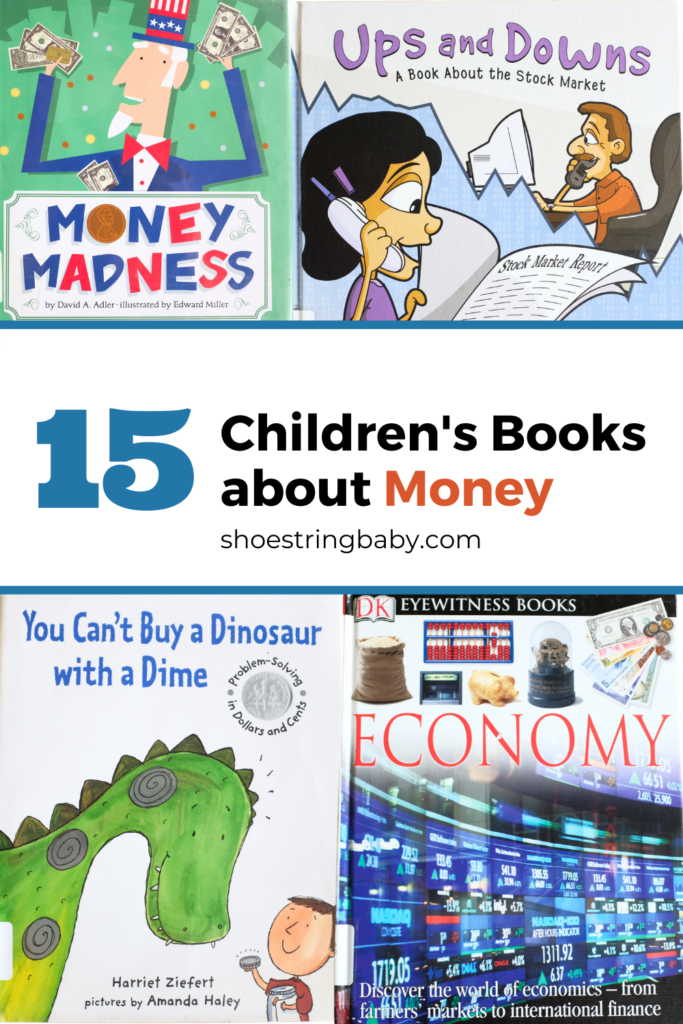15 Children’s Books About Money & Saving
This post may contains affiliate links. As an Amazon Associate, I earn from qualifying purchases. Read the full disclosure here.
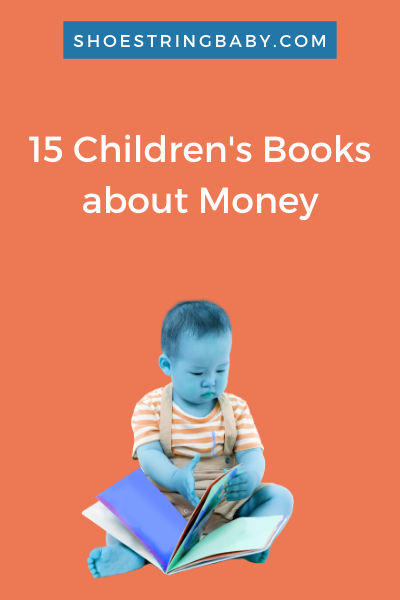
Check out this list of 15 children’s books about money and saving – it is never too early to teach financial literacy to your kids!
Teaching our baby good financial sense is a huge parenting priority for me. Learning the value of saving young will pay dividends (literally!) later in life.
One way I plan to plant the seeds of frugality is through reading children’s books about money and savings early and often.
There are lots of curated lists of great children’s books out there but I did not find as many hits when I looked specifically for children’s books focused on money and economic concepts.
So I pulled pretty much every kids book I could find at our local library and put together this list of 15 Children’s Books about Money and Saving.
I was impressed will how many books presented fairly high level financial ideas to their young audience. The list includes books about saving, making money, counting, economic concepts, and the consequences of overspending. Happy reading!
You Can’t Buy a Dinosaur with a Dime
By Harriet Ziefert
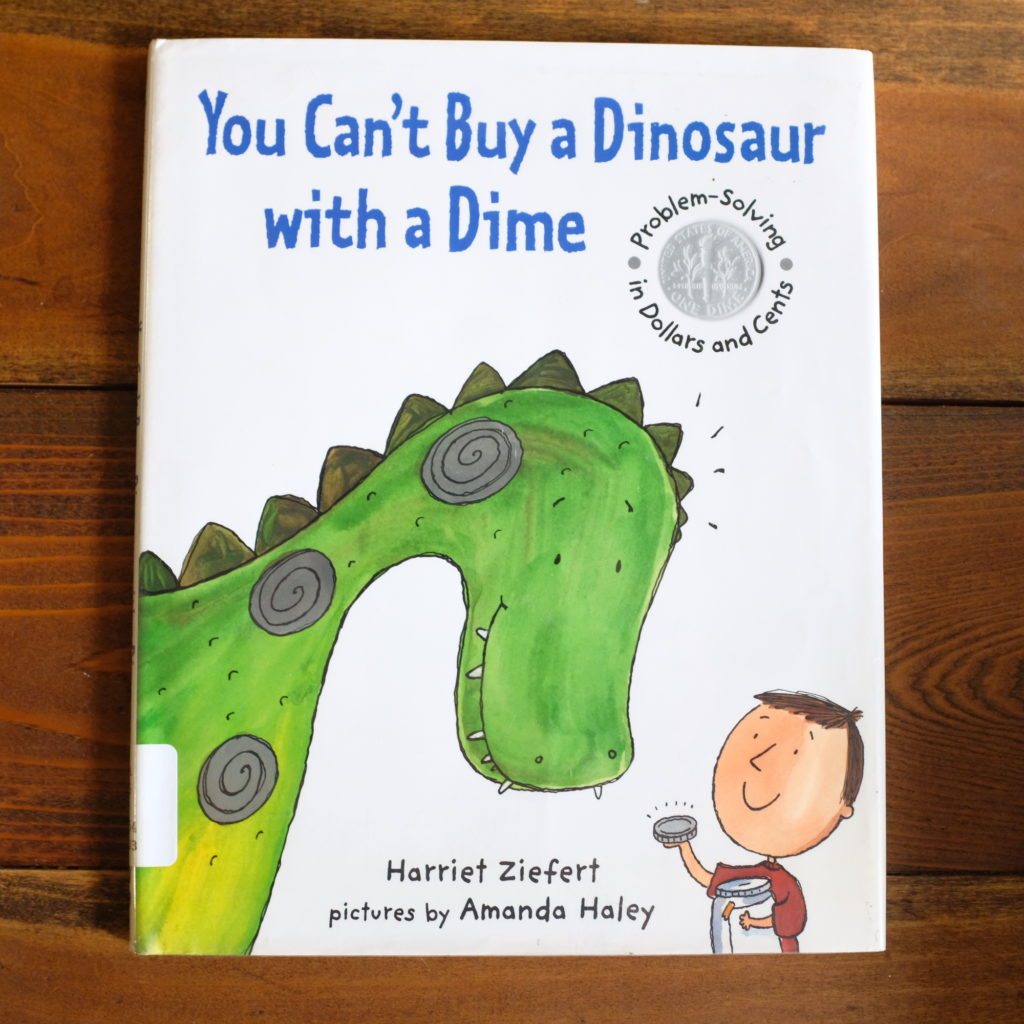
You Can’t Buy a Dinosaur with a Dime is a children’s book about saving and earning money. It follows a young boy as he uses his money to buy a toy dinosaur. He then works to earn more money to build back up his savings. He then opts for a cheaper second dinosaur to not spend all his savings.
This children’s book offers opportunities to practice counting money. It gives amounts in coins and then adds them up throughout the book. The end of the book includes money facts, money activities and ideas for earning money when you are a kid.
Lemonade in Winter
By Emily Jenkits & G. Brian Karas

Lemonade in Winter follows a sister and her little brother as they try to make money from a lemonade stand on a snowy winter day. They count quarters to buy ingredients, and count the money they make on sales. The book ends with a crib sheet on coins and how they add up.
The illustrations of this book are cute for winter time and there are ample opportunities to practice coin counting along with the characters.
Bunny Money
By Rosemary Wells
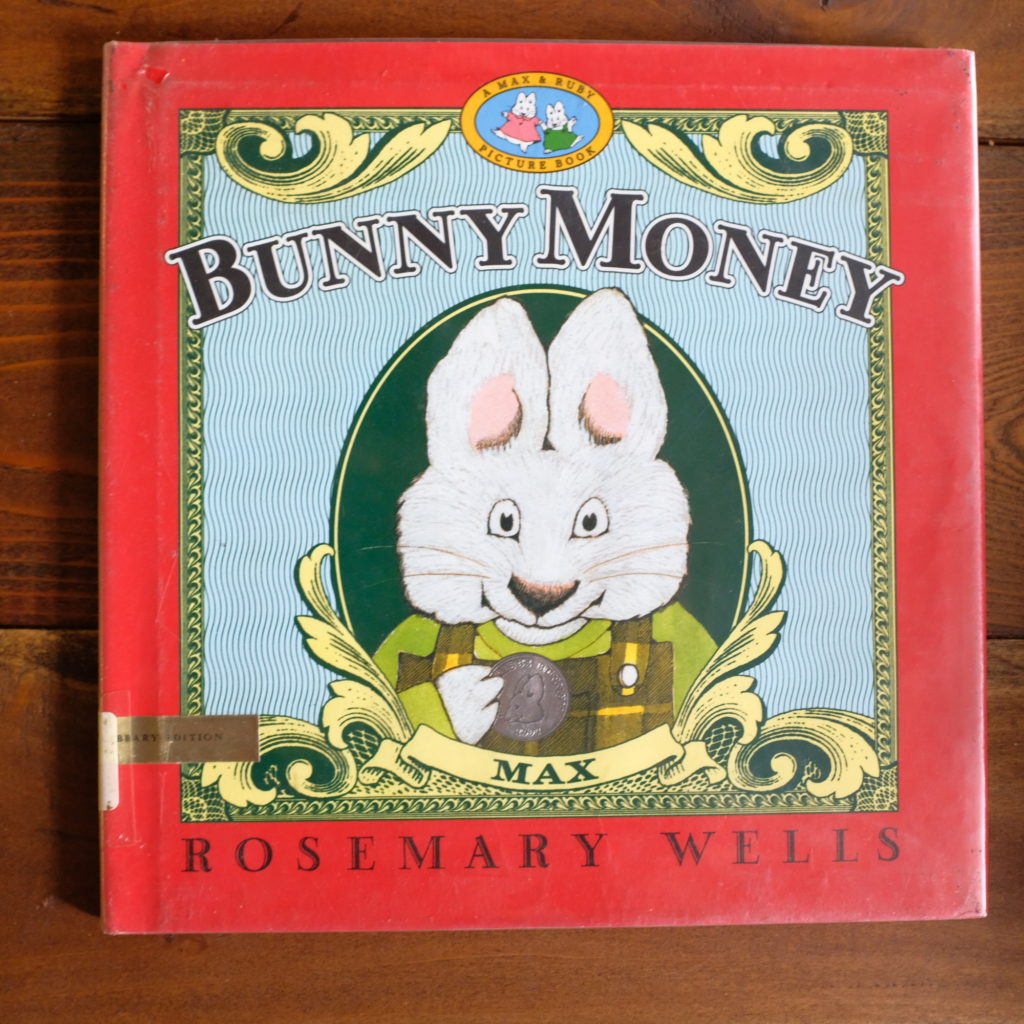
Bunny Money is a children’s money book that follows a brother and a sister bunny as they shop for their grandmother’s birthday gift. The younger bunny brother is careless with his money decisions and costs them money throughout the book. He spends their money so they do not have enough to pay for bus fare home.
The book includes simple dollar counting throughout. I think this book would have been improved by the brother learning more from his money missteps. As it is, it feels incomplete but could offer an opportunity for discussion after reading the book.
Alexander, Who Used to Be Rich Last Sunday
By Judith Viorst
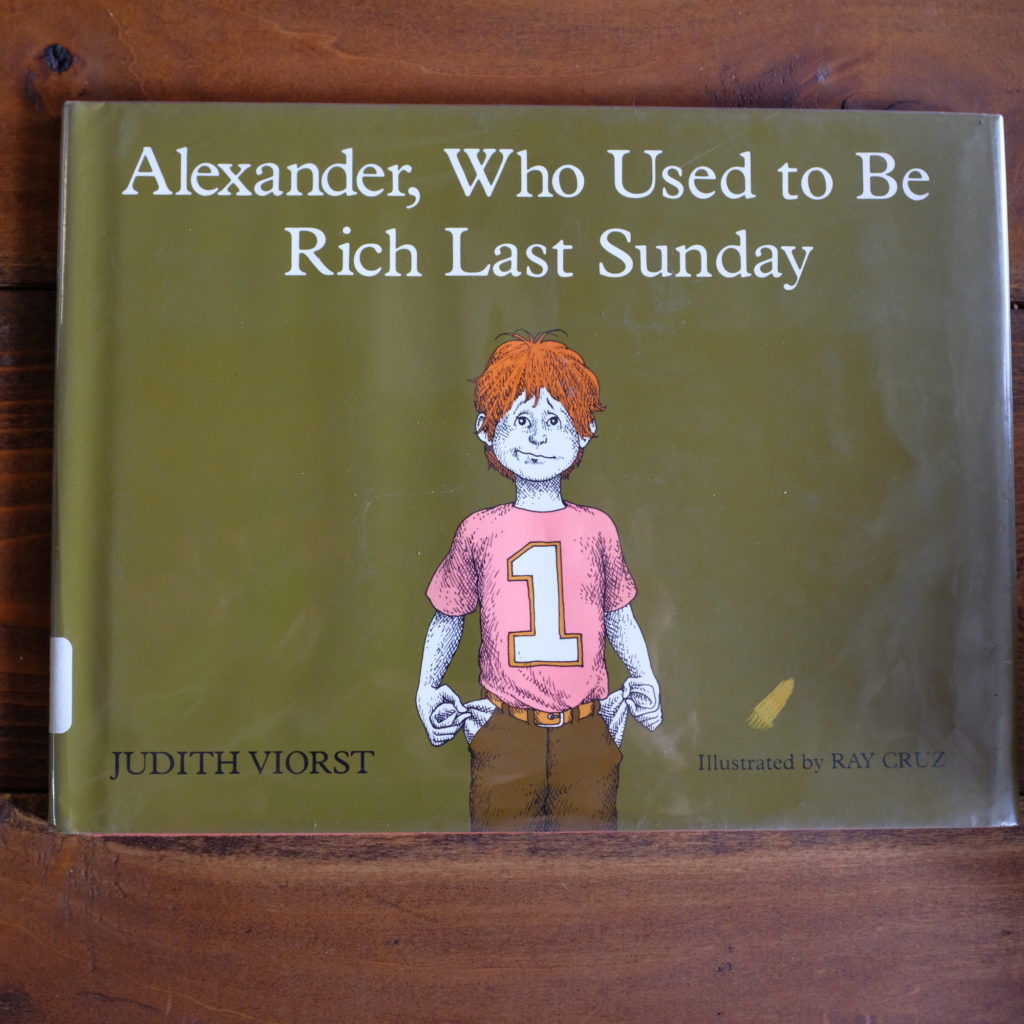
Alexander, Who Used to Be Rich Last Sunday is a children’s book in the same series as Alexander and Terrible, Horrible, No Good, Very Bad Day. Of the children’s stories on this list, I enjoyed the writing style of this book the most.
The book follows Alexander as he recounts a time when he used to be rich (he had a dollar). It details how he easily spends all his money even though he meant to save some of it and compares him to his brothers who are better savers.
It ends with him not having any money and only a few useless things he had bought. This would be a good book for discussion and has more literary style than other children’s money books.
Money Madness
By David Adler
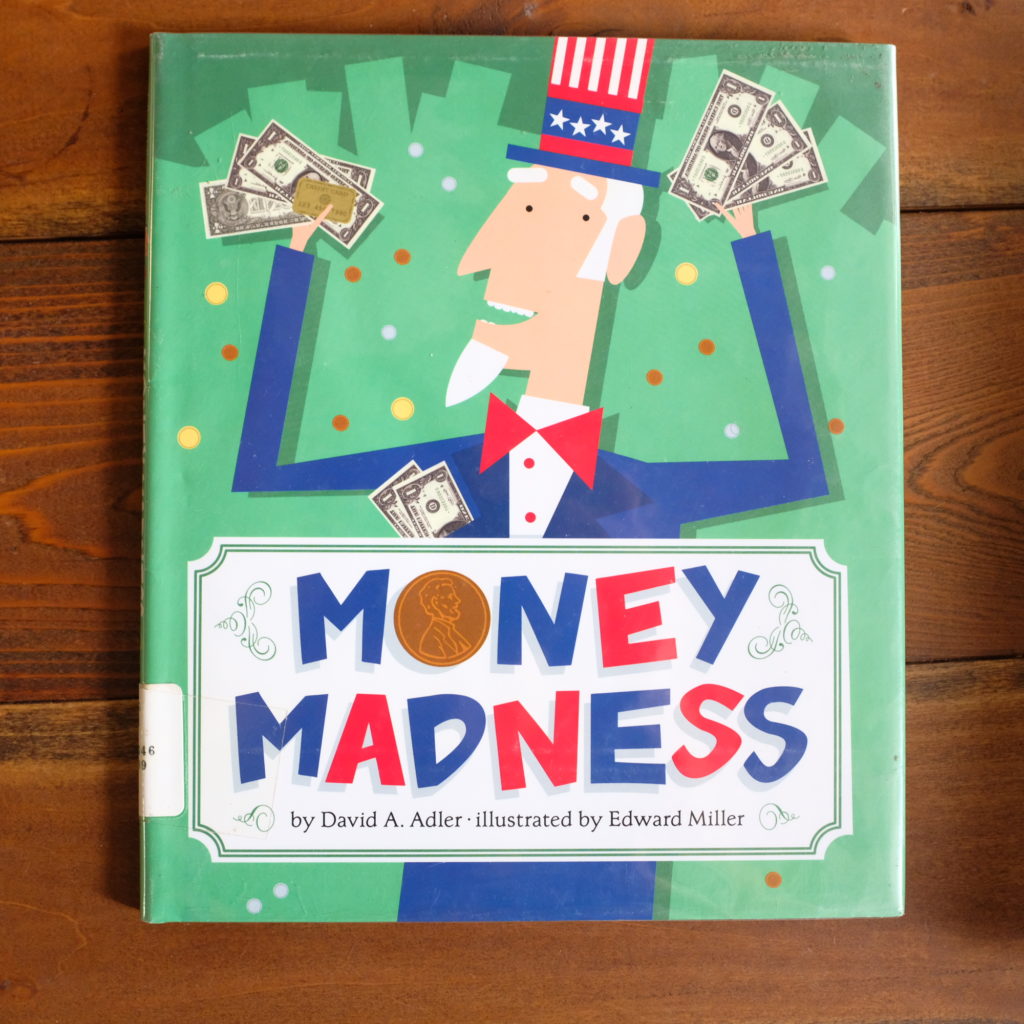
Money Madness answers the question “why do we have money and why do people want it?” It traces the evolution of money from before there was money, to trading and through early types of currency.
My favorite part of this kid’s book is the illustrations and explanations of different currencies used around the world. The book even touches on exchange rate fluctuations between currencies. It closes with the move to digital money and bank accounts.
Eyewitness Books: Money
By Joe Cribb
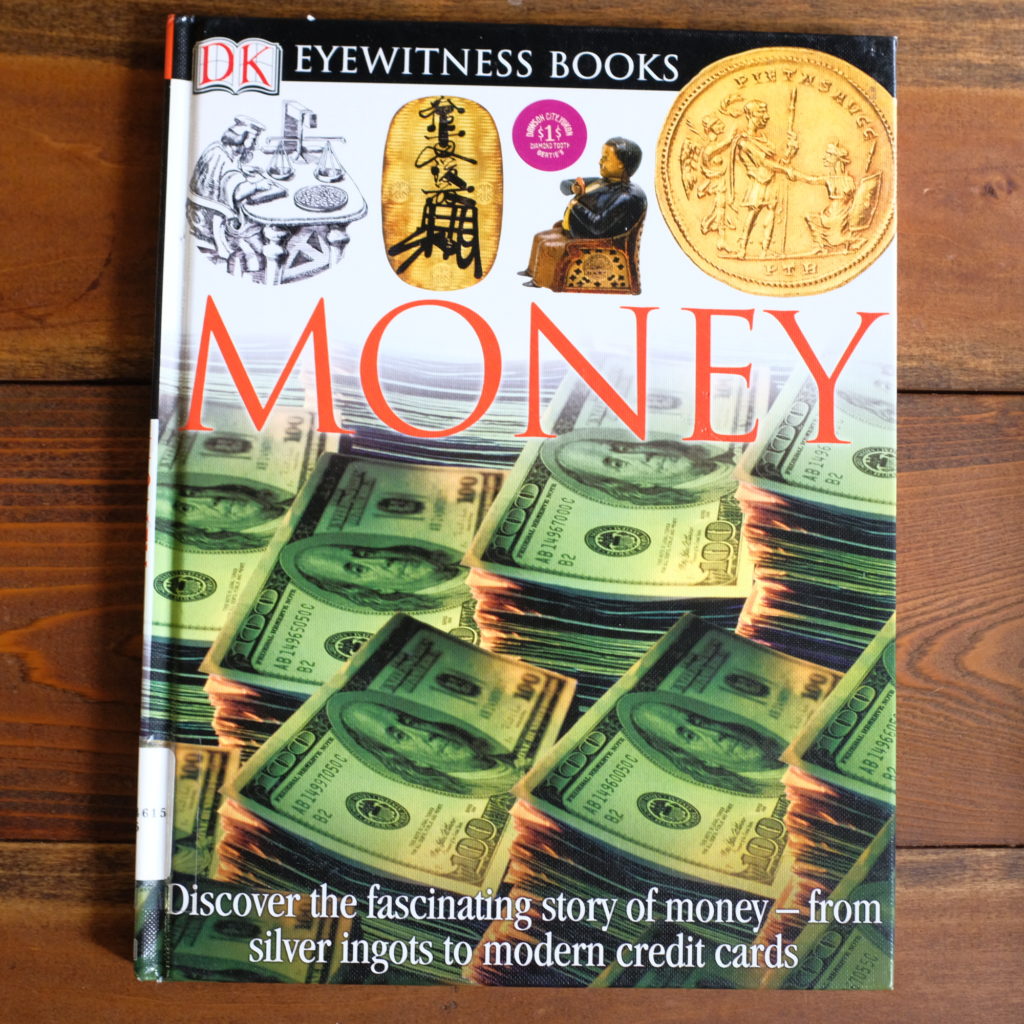
Eyewitness Books are a wonderful series of in-depth non-fiction books on over 100 topics. Instead of solid pages of text, Eyewitness Books are known for having many images all over the page with text blurbs around pictures.
The Money Eyewitness book covers the origins of money and how money is made. It also goes in depth about different money and money practices around the world; though their coverage is very light on African and Asian countries compared to Europe.
I really like that this book doesn’t shy away from the nefarious things some people do in pursuit of money, including forgery, crime and money’s role in war. It is both interesting and gives kids the benefit of the doubt that they can understand these more complex topics.
Eyewitness Books: Economy
By Johnny Acton & David Goldblatt
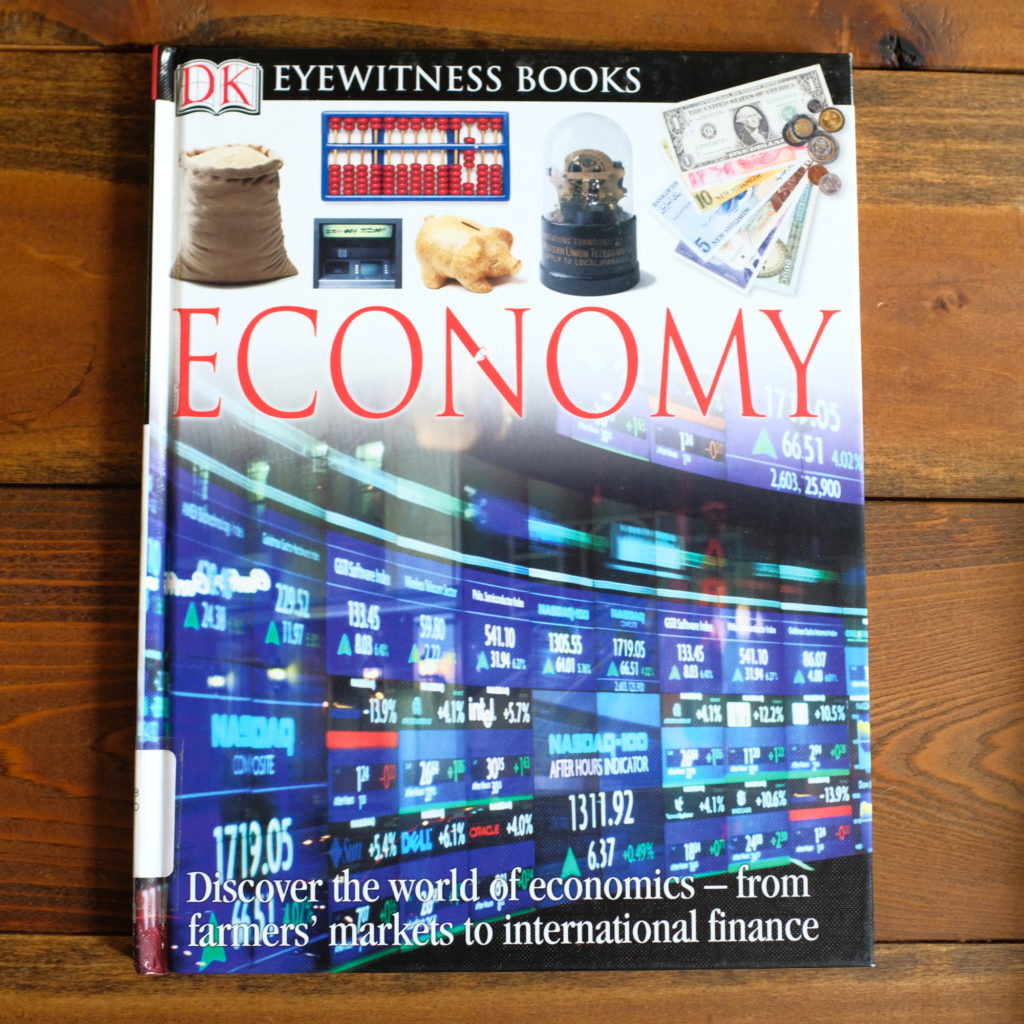
The next step up from the Money Eyewitness book is the one on the Economy. It shares the same style, with lots of pictures and factoid blurbs around the page. Eyewitness Books are full of facts and trivia that keep kids coming back.
The Economy edition has a really great range of topics that would make a lot of Econ classes proud. It covers labor, trade, banking, globalization, and corporations. In terms of markets and investing, it has sections on bonds, speculation, savings, and inflation.
It also delves into governments roles in the economy and taxation. I appreciate that it includes information on income inequality and a measured view on the role of development aid.
Monster Money
By Loreen Leedy
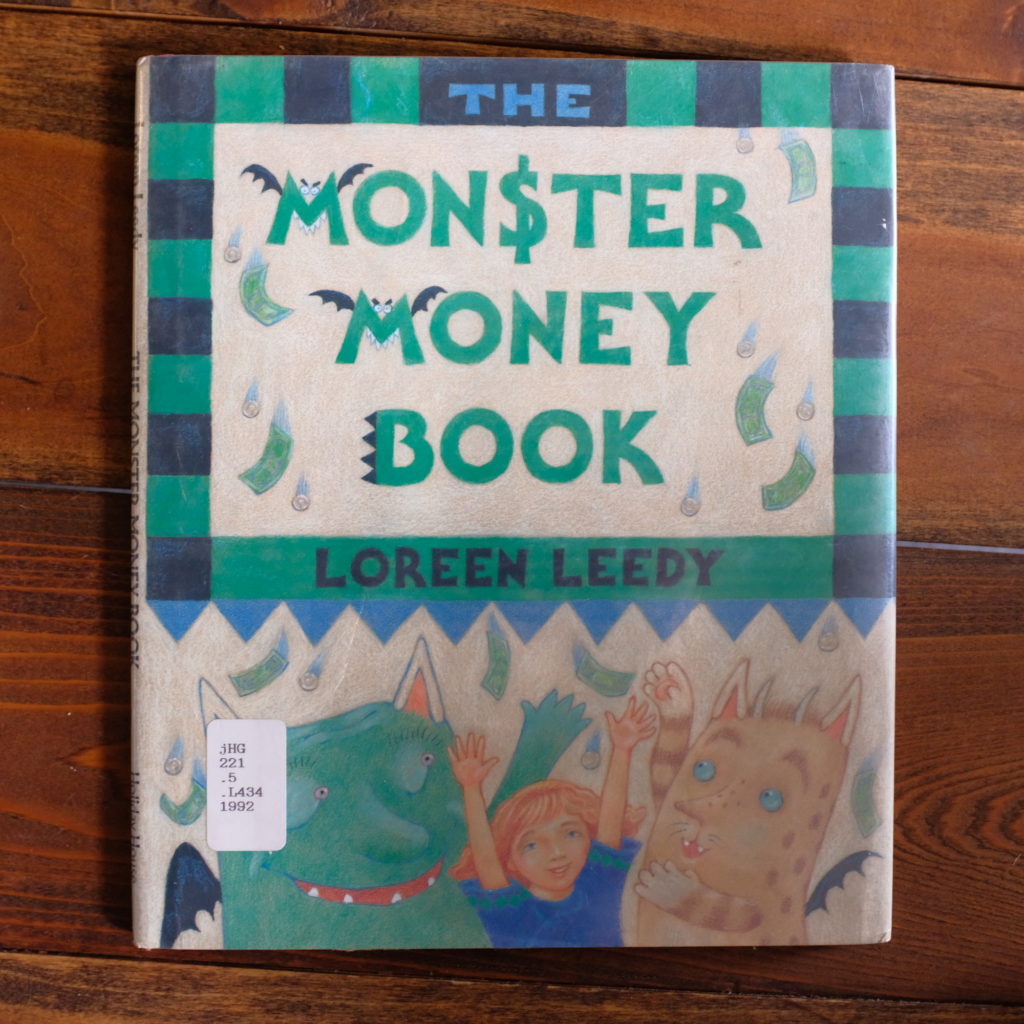
Monster Money is a children’s book about a meeting of a monster club where they discuss their club treasury. Two potential members come to the club meeting and are ready with their club dues in case they are allowed to join. In discussing the club dues and treasury, the book covers concepts like counting, budgeting, and charitable giving.
The text of the book is presented in thought bubbles. I personally found the text a bit arduous to read in this style so this was one that didn’t work well reading to my kid. I still included it in the list for kids who may be older, and those into monsters.
That Costs Two Shells
By Nancy Loewen
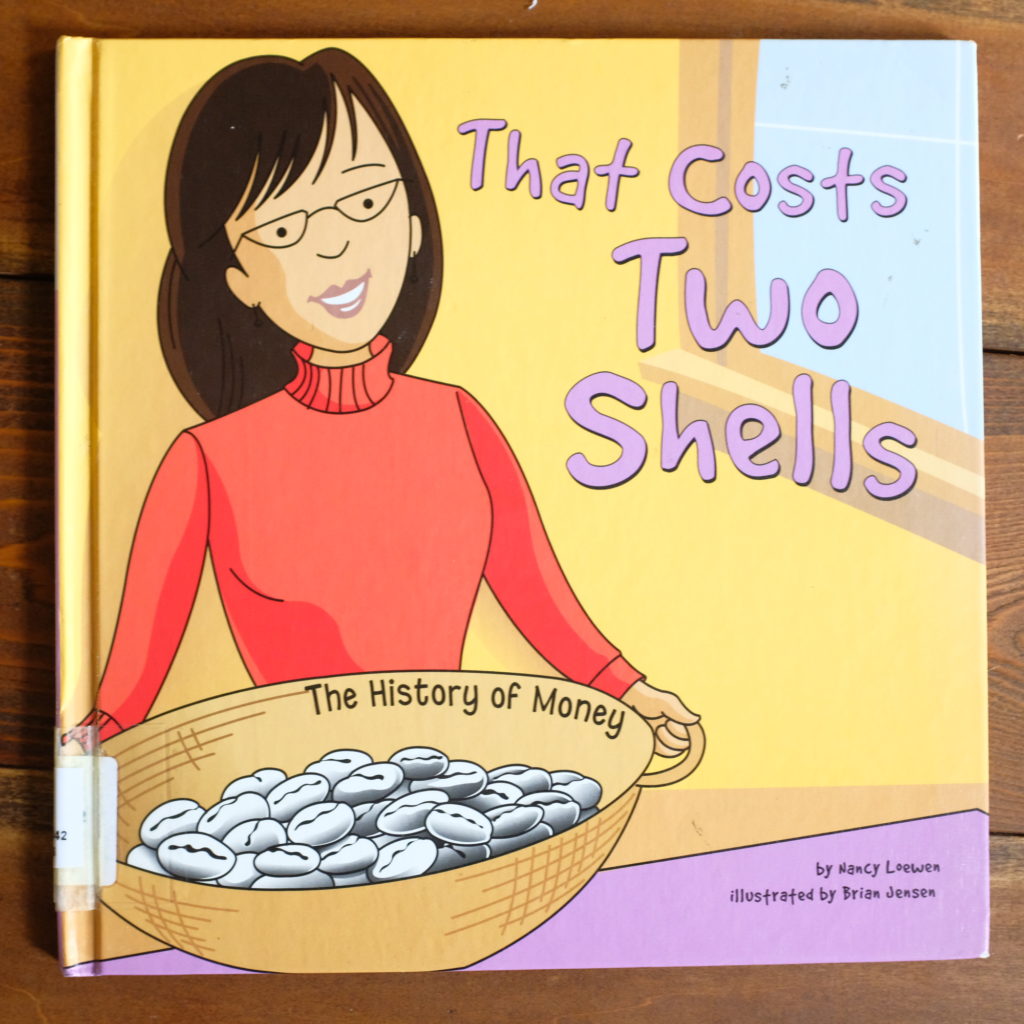
That Costs Two Shells is a children’s book about the history of money. The story is about a lesson at the local library about the evolution of trading and money over time.
It includes details about how other countries developed money, like how the earliest coins were made in present-day Turkey and how China’s used paper money centuries before Europe.
I like that this book includes a little trivia fact about money on each of the pages. For example, one fact the book shares is how some historians think that written language evolved as a way to track trades.
Save, Spend or Donate?
By Nancy Loewen
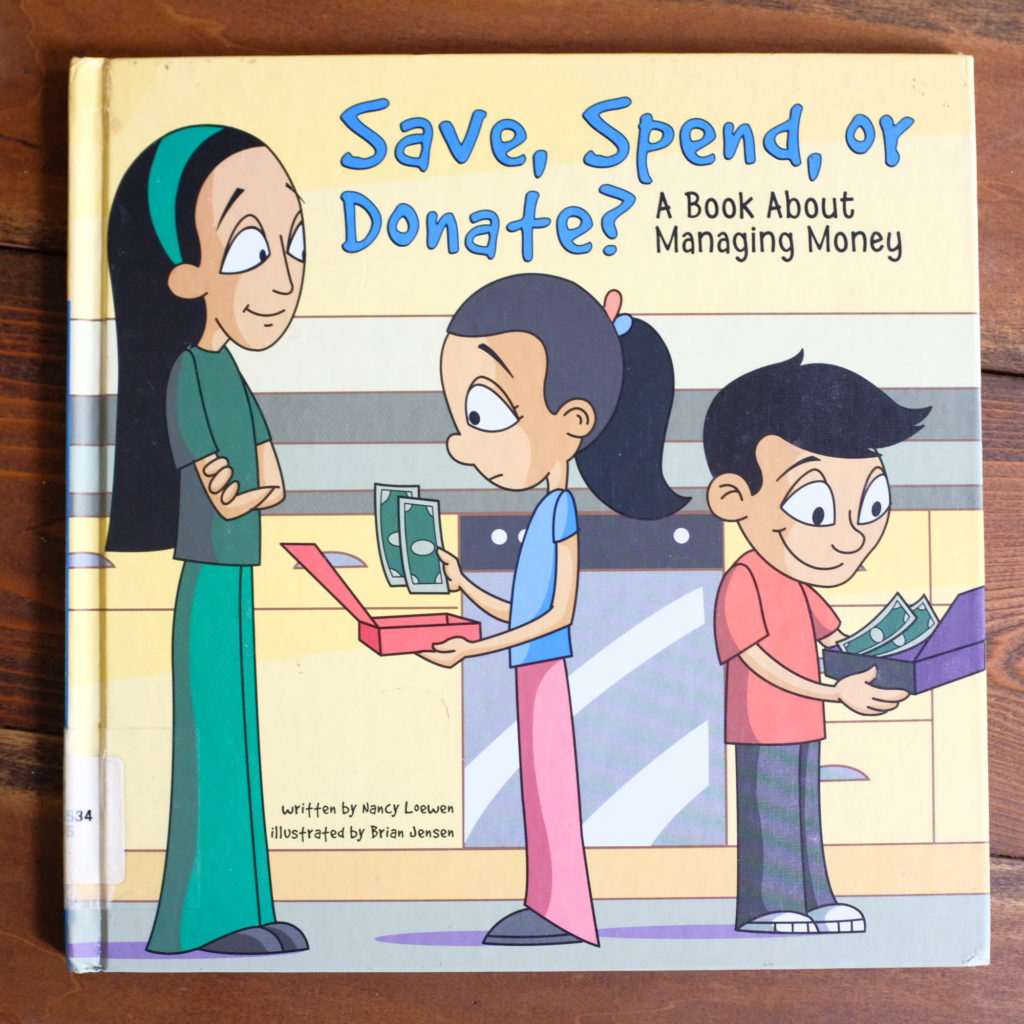
Save, Spend or Donate is another book in Nancy Loewen’s series of children books about money. This volume introduces children to money management concepts.
It follows two kids as they distribute their allowance money into envelops designated for saving, donating and spending. They go to the bank to deposit their savings and learn about saving goals.
I like that this book addresses issues that can be tough for some people. It hits on how it is okay to spend some money instead of saving it if you’ve been budgeting and saving (something I struggle with sometimes!), and discourages buying things on credit.
I also appreciate that the beginning of the book includes a fact bubble about how allowances look different in every family. This is a gentle nod to both different family economic situations and parenting styles. As a bonus, it highlights how kids should help around the house regardless of allowance!
In the Money
By Nancy Loewen
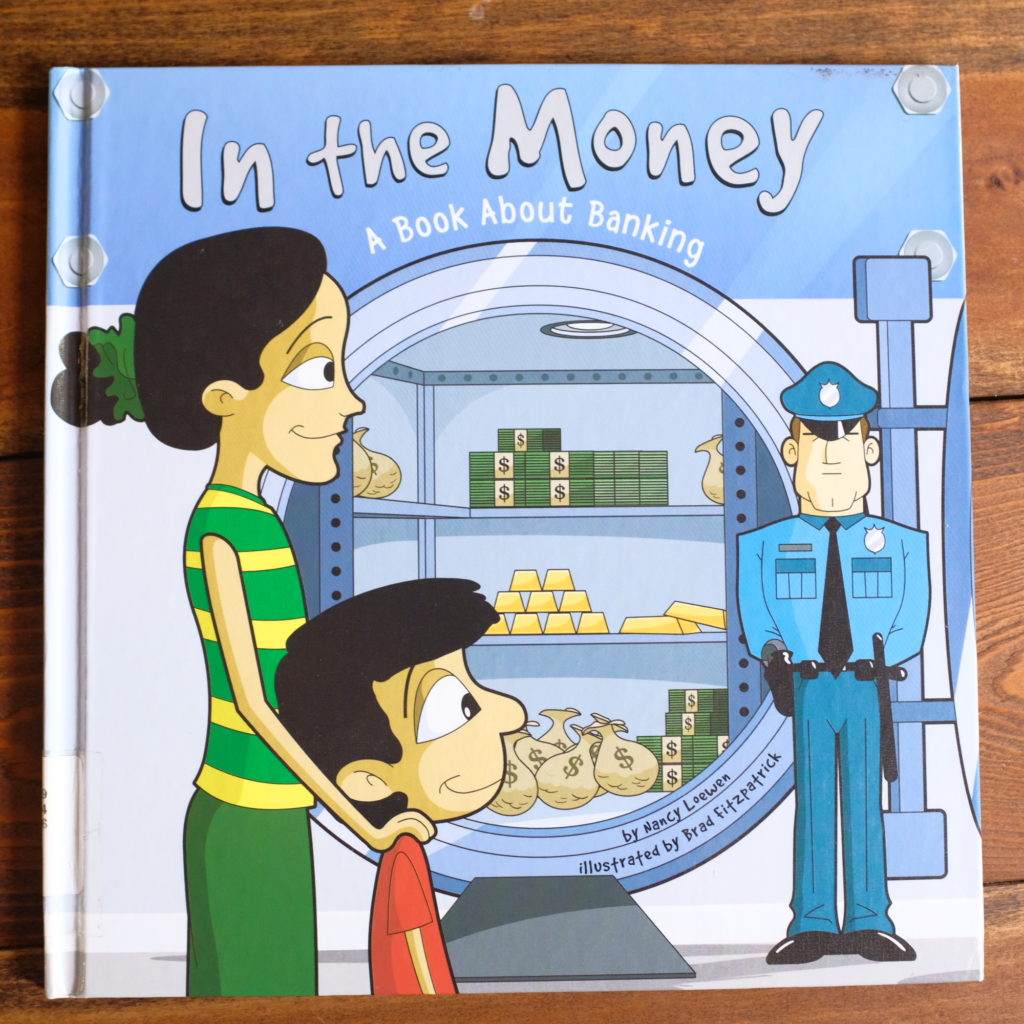
I enjoy Nancy Loewen’s children’s books called Money Matters because they touch on concepts that may be more nuanced for children. Her In the Money book takes a look at our banking system. It follows a child as he accompanies his mom on Take Your Child to Work Day.
This story discusses how savings accounts and loans work. I like how it included details about what happens to old money that is too damaged to use and introduces kids to safety deposit boxes.
Taxes, Taxes
By Nancy Loewen
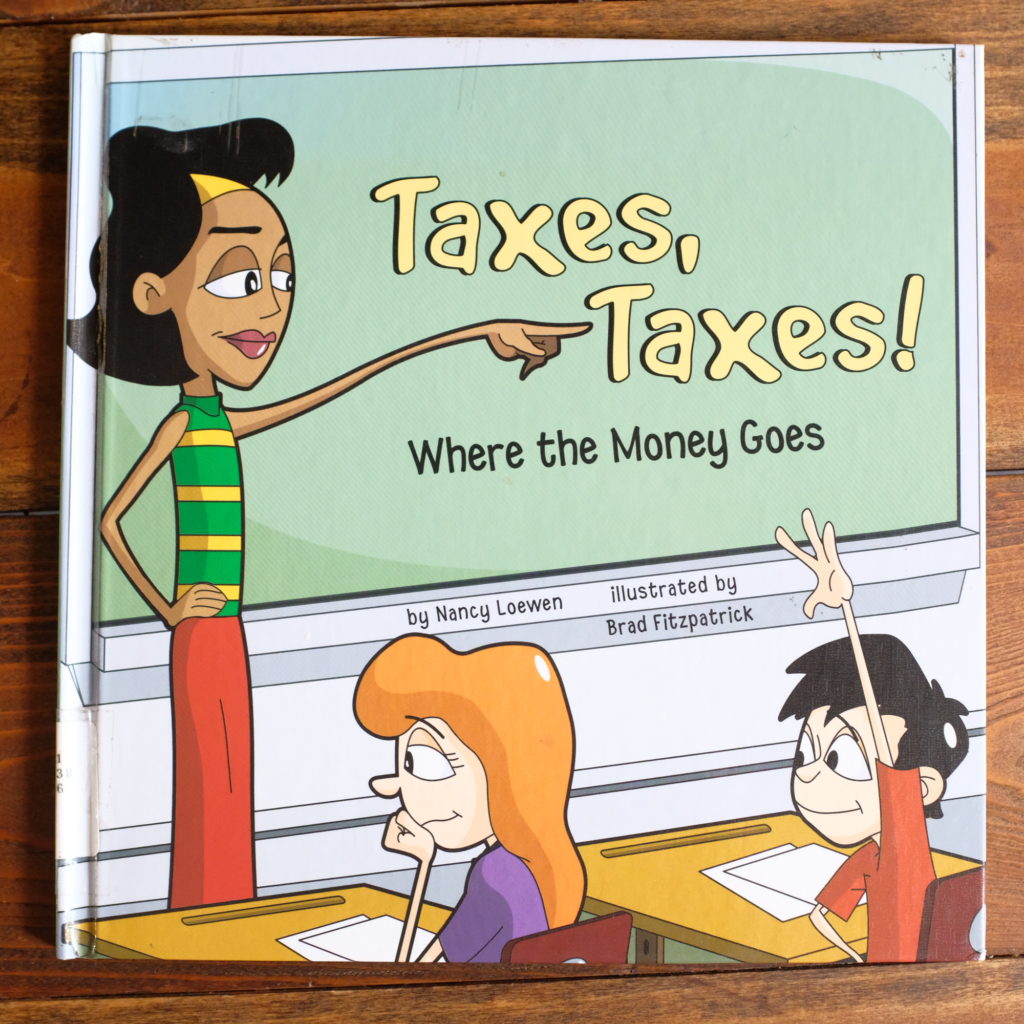
Taxes, Taxes is about how taxes work on the federal, state and local levels. It gives many examples of the things taxes are used for and discussed different types of taxes like sales, property and income tax.
It includes some interesting facts, like how tax withholdings from pay checks helped keep a steady stream of income to the government during WWII. I particularly like this quote: “The goal of the tax system is to create balance, so that all people have their basic needs met.”
Lemons and Lemonade
By Nancy Loewen
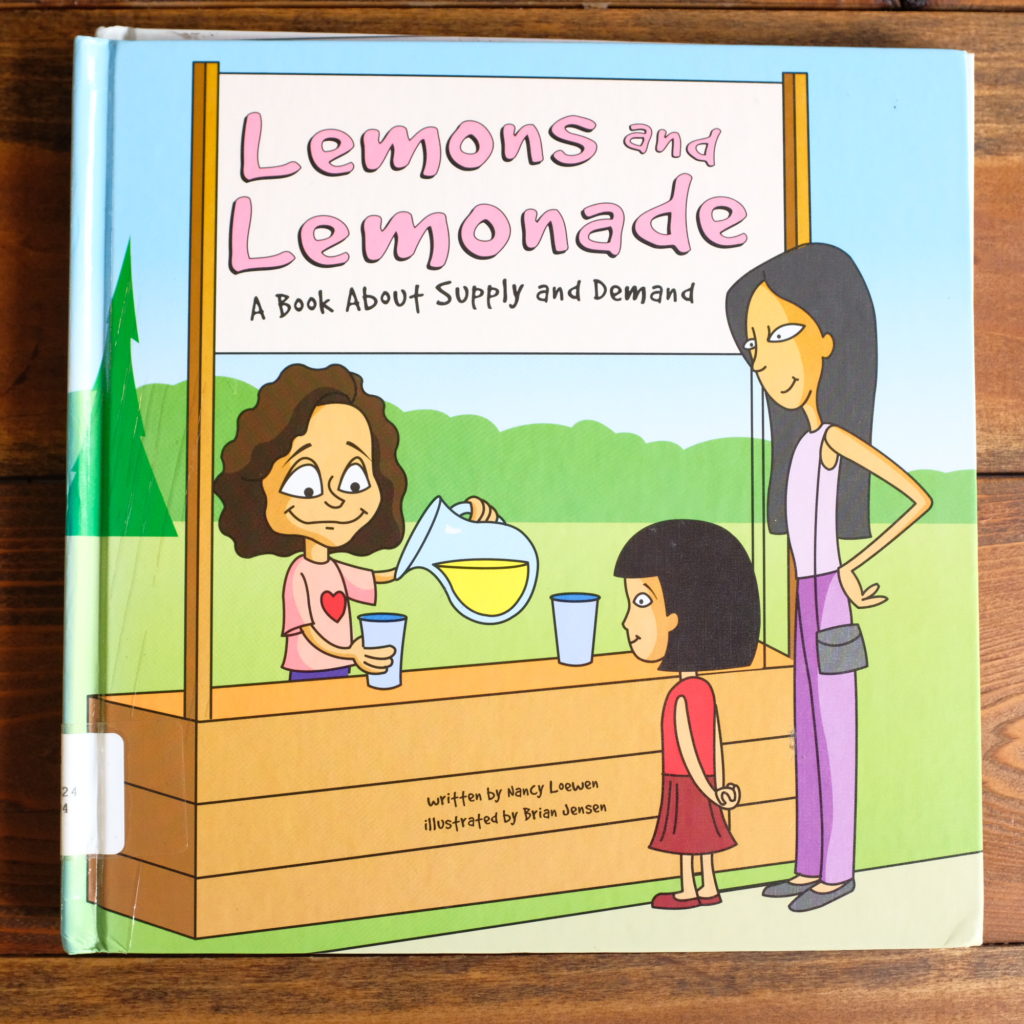
Lemons and Lemonade is another book that teaches business concepts through a story about a lemonade stand. This kid’s book weaves business principles like supply and demand weaved throughout the story.
It highlight concepts like net vs. gross profit, monopolies, and testing the market. The end of the book has example sales for kids to calculate how much profit the lemonade stand would make based on sales. It does a good job of simplifying business ideas in a way that is easily understandable for a younger audience.
Ups and Downs
By Nancy Loewen
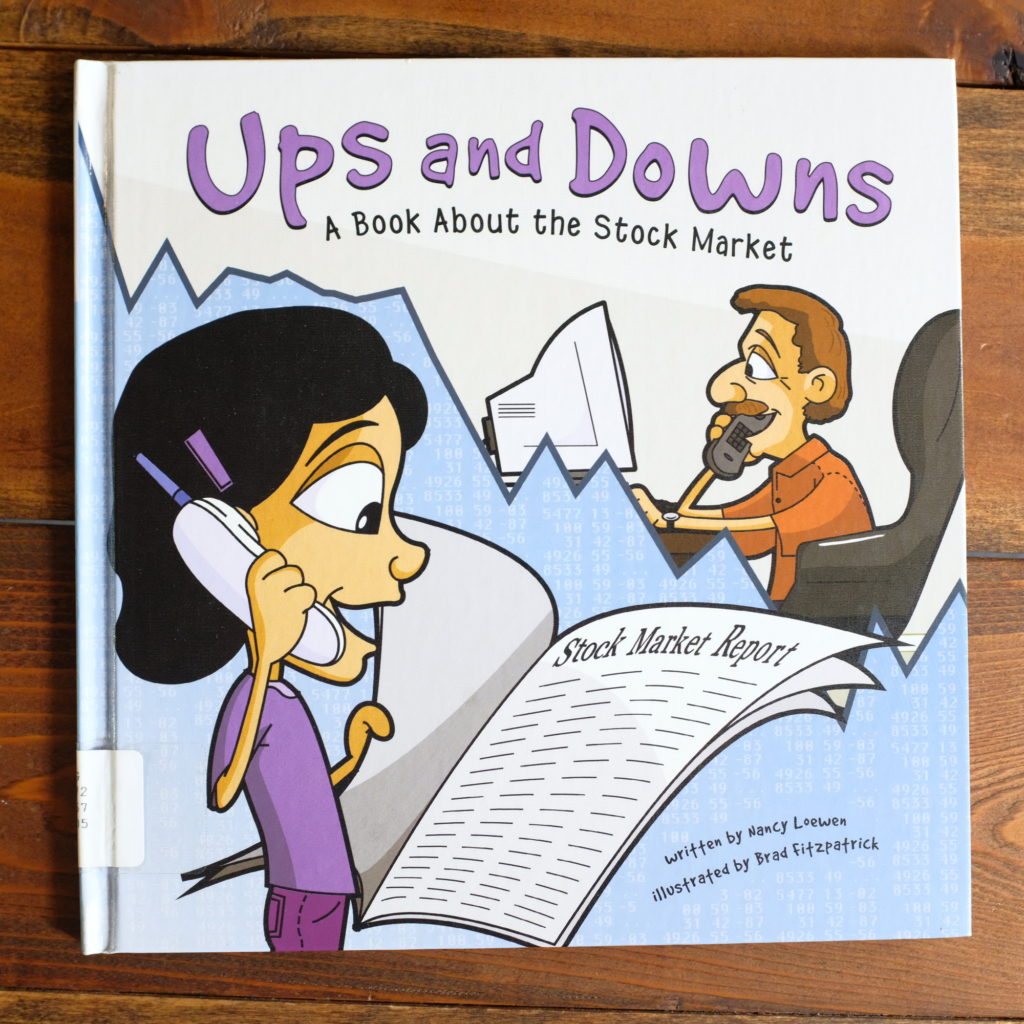
Ups and Downs is a children’s book about investing in the stock market. It explains basic stock market and investing concepts through the story of a little girl who was given her first stock as a birthday present.
Ups and Down highlights the inherent risk in stock investing and how long-term investing strategies are more likely to pay off. It also explains mutual funds as an alternative to owning individual stocks.
It shows newspaper listings of stock prices which feels dated, but does include how stock performance can now be tracked online. However, it does not touch on online trading options.
Looking for more great children’s books? Check out some of our other book lists:
- 15 Toddler Books about Autumn
- 9 Children’s Christmas Books NOT About Presents
- 7 Great Garbage Truck Books for Kids
Like this post? Pin it!
